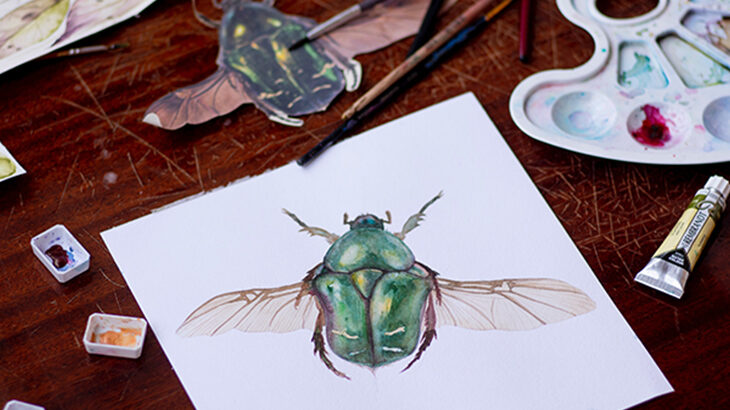India is one of the most diverse and rich countries in terms of heritage, culture and traditions. The customs of our country are different in every city and region. From food habits to fashion – you will see a lot of differences. For example, the language ‘Hindi’ is spoken differently in Delhi and in other parts of South India. Just like that, our country is also known for its fabric painting designs and their styles. There are so many painting styles used to design fabrics like Madhubani, Batik, Pattachitra, Thangka, Kalamkari among other famous styles.
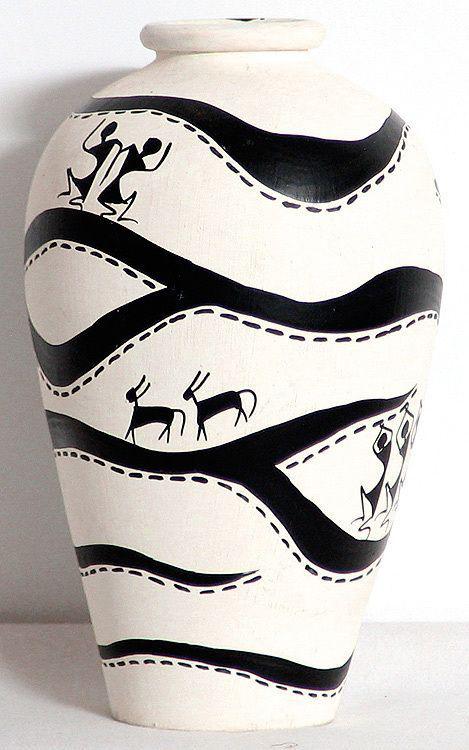
Image Source- Pinterest
The most common feature of all of these paintings is the use of gods and goddesses in their designs. These paintings also take inspiration from everyday lives and then fabric painting designs are created. These paintings were, however, not always designed on fabrics. They were painted on the walls of temples, caves and other historic places, which have become popular heritage sites. As time progressed, instead of walls and caves, these painting styles began to be used on fabric to showcase our culture and style.
During the olden days, all of these paintings were created using natural colours which were extracted from nature or created by the designers themselves. But today, with so much evolution in technology, there are many sources to find colours for fabric designing. This improvement has also led us to move more towards textile designing rather than just being confined to painting on walls and in caves.
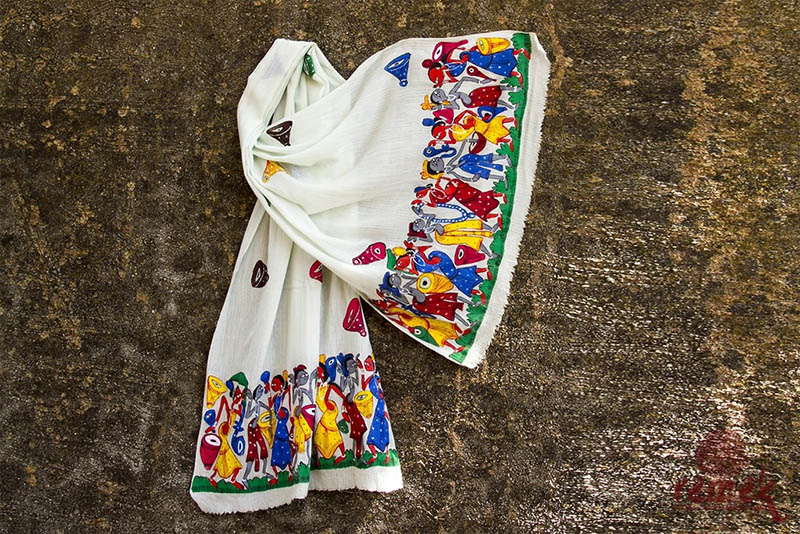
Image Source- Remek
Today, the Indian fabric design style is not only loved within our country but it has demand internationally. There are many famous painting forms which people love all over the world and wear clothes made using these textile designing techniques.
Famous Fabric Designing Art Forms
There are many different textile designs in which Indian art forms of painting is used. The most popular among all of them are:
Madhubani Art
The origin of Madhubani painting is Mithila, a small village in the state of Bihar. The fabric designs made using this style of painting are very colourful and detailed. There are many tools used in Madhubani like fingers, nib-pens, brushes, twigs and matchsticks. This painting style uses pigments and natural dyes as its components. The one factor which sets Madhubani painting apart from all others is the geometrical shapes used in its creation.
In Mithila village, even today this art form is passed from one generation to another like a tradition. This art form is not only about creation of clothes but is also used to make wall hangings and other decorative items for homes. In Madhubani paintings, no part of the canvas is left empty. Also, the shapes and designs used are said to have been existing since the time of ‘Ramayana’. You can spot differences between Madhubani paintings using the ‘upper caste and lower caste’ trick as both types have different representations of Madhubani paintings.
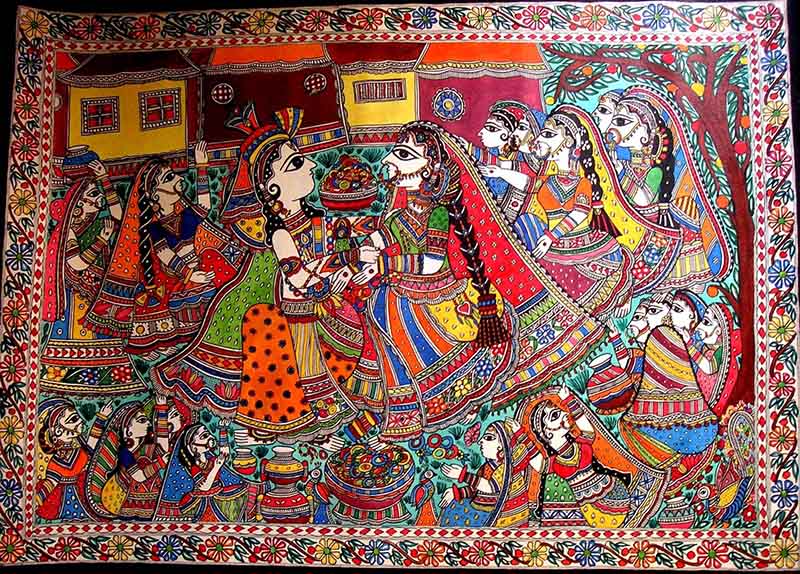
Image Source- Madhubani Paintings
Kalamkari Art
The history of Kalamkari hand paintings takes us 300 years back. This is why it is considered to be an ancient block-painted and hand-painted technique. This art form originated in the South Indian states of Andhra Pradesh and Telangana. Apart from India, another city in Iran known as Isfahan was the originator of Kalamkari painting. The foundation of Kalamkari painting is derived from Srikalahasti style. In this style, a ‘kalam’ or pen is used to draw designs with a free-hand.
There are many steps involved in the making of Kalamkari fabric design before getting the final output like hand printing and resist-dyeing among others. To create a beautiful Kalamkari painting, the art form is done using a gold brocade and it is worked on woven fabric. When Raja Shivaji and Raja Serfoji ruled their kingdoms, dhotis and sarees were made using Kalamkari painting art form for the royal family.
Also Read : 3 Types of Indian Handpainting You Can Use to Make Garments, Jewellery & Home Decor
Using this style of Indian hand painting, you can create many types of clothes like skirts, peplum tops, jeans, shrugs, short dresses for adults and many other customised garments for kids. You can also create other accessories like jewellery and sling bags using this hand painting technique. To decorate your home using Kalamkari, you can also design cushion covers and tablemats.
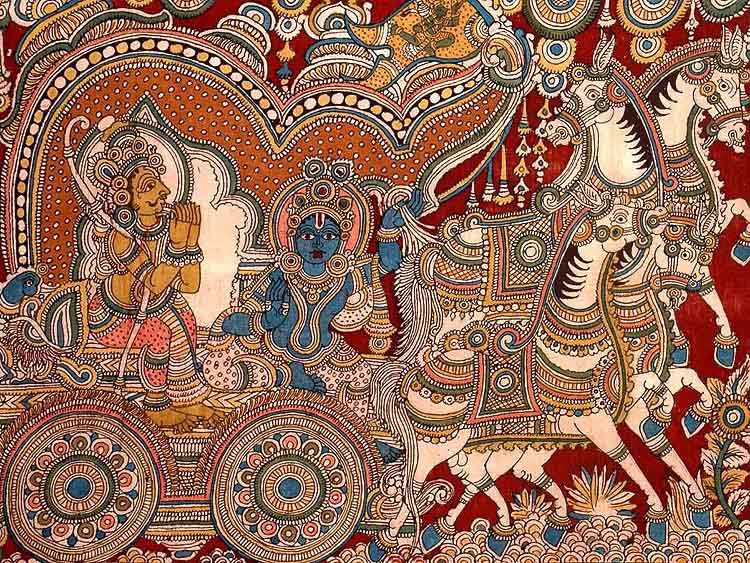
Image Source- UX Collective
Warli Art
Warli is an art form which was started by the tribal people living in the North Sahyadri Range of Maharashtra. The range consists of many towns from Palghar district like Jahwar, Talasari, Mokhada, Vikramgad and Dahanu. It is a tribal style of painting which shows the culture, traditions and lives of their own people on a daily basis. This Maharashtrian folk art is being loved a lot lately because of its local essence.
In the beginning, the colour used to create Warli paintings was a mix of rice water and gum. This form of art was usually done to create wall paintings using a brown background. But today, not only wall paintings but Warli art is used to make jewellery, garments, bags and many other accessories.
The most loved and popular fabric design among all Warli patterns is a chain of people around one motif. It was basically to show the unity of their people, especially during festivals and special occasions.
Using this art form, now you can create many kinds of designs on garments like skirt, bandana, kurta and dupatta. Apart from garments, you can design a stationery pouch, tunic for kids and wall hangings too.
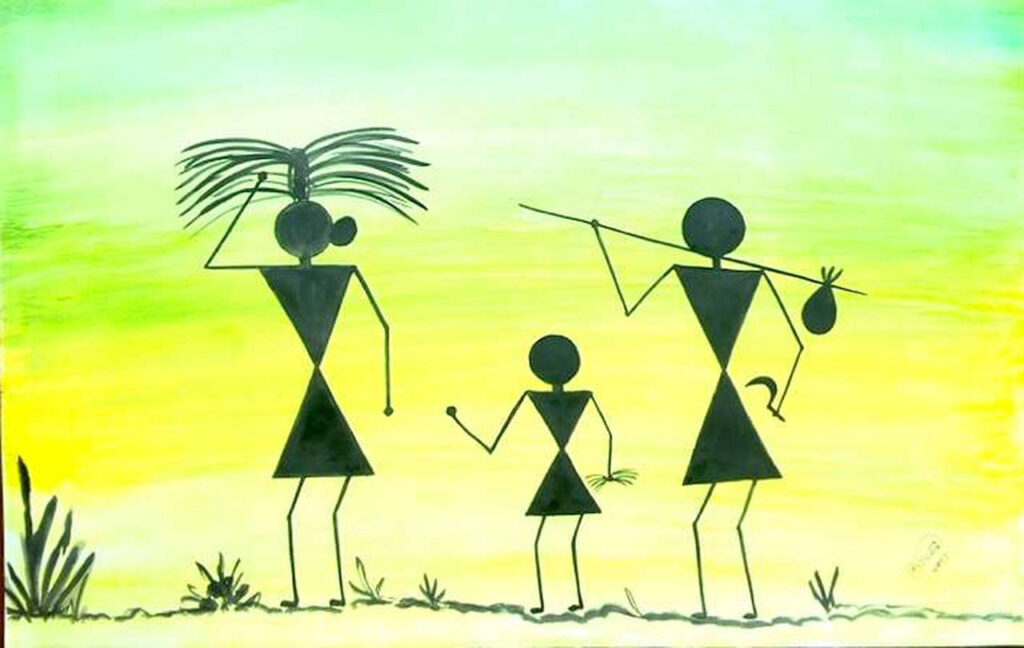
Image Source- Fizdi
Want to learn more about textile designing? Then join our fabric design course from home to learn Indian handpainting styles. You will be mentored by Neeta Lulla, who is a 4-time national award-winning fashion designer. You will also be certified by the Govt. of India and we will help you kickstart your fabric designing business easily.

